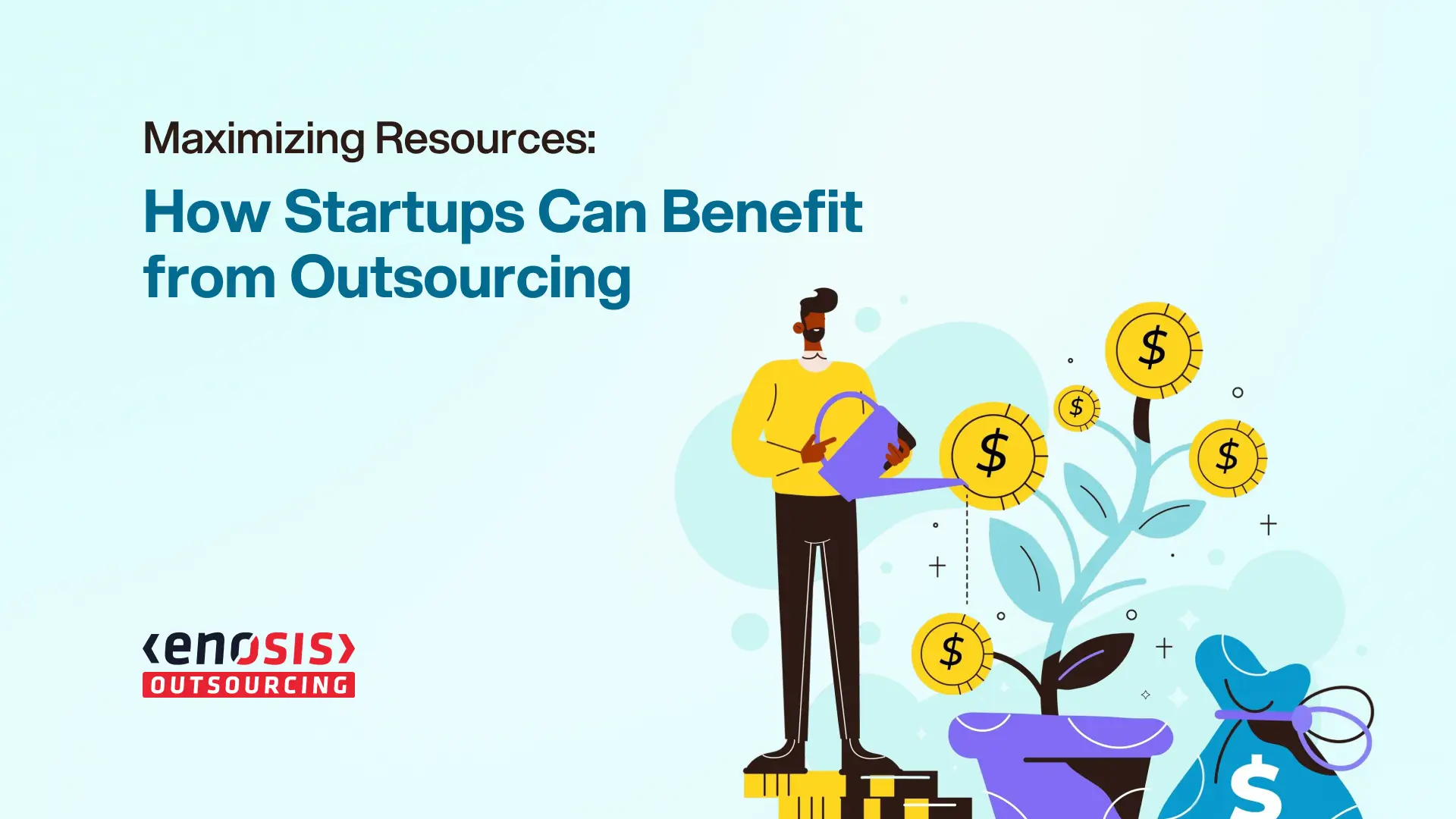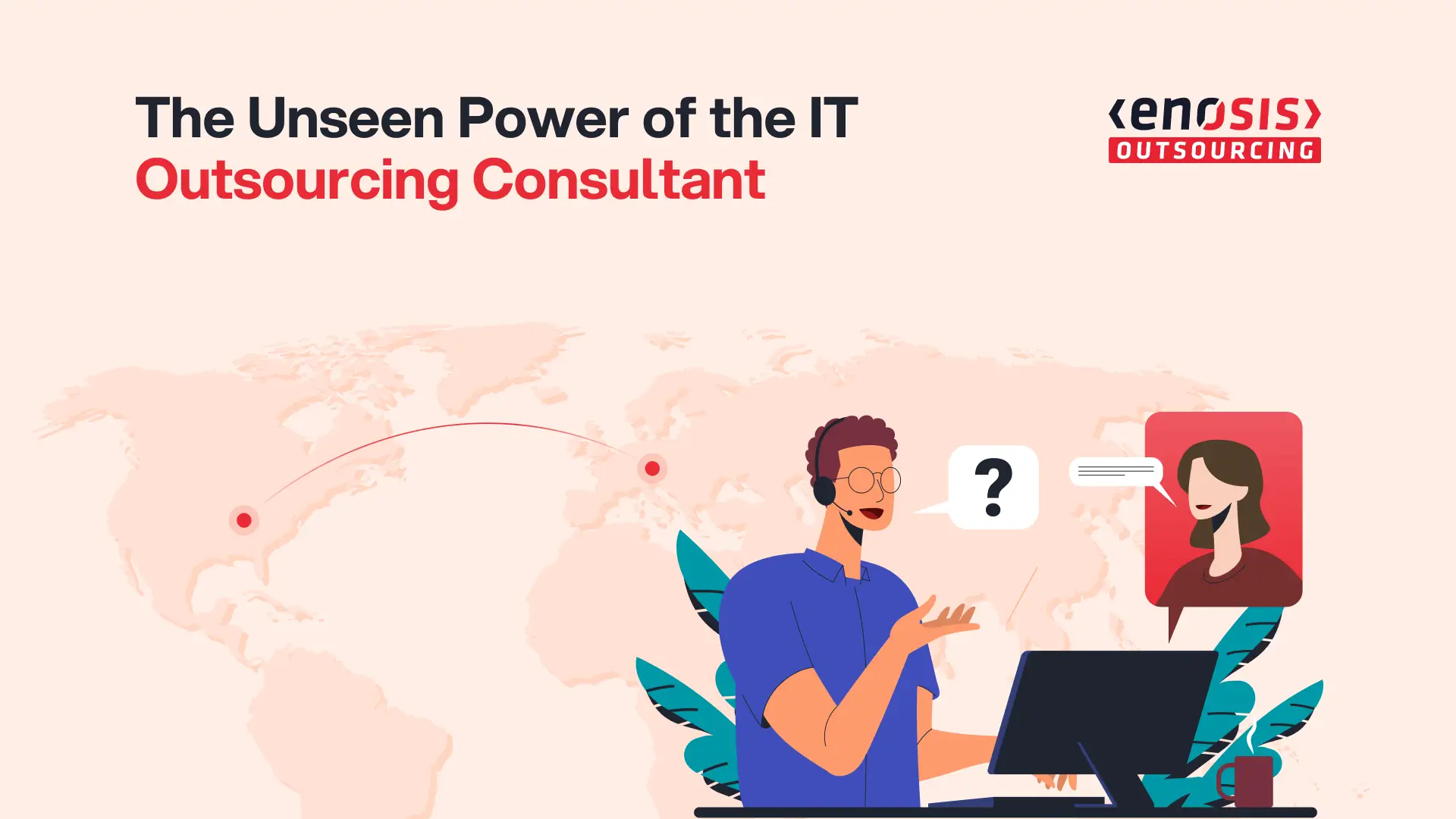Post Activity
 32
32
Table of Contents
Share This Post
Table of Contents
Software development outsourcing delegates tasks like coding, design, testing, and maintenance to external providers, enabling businesses to access specialized expertise, cut costs, and scale efficiently. The global IT outsourcing market reached USD 588.38 billion in 2025, fueled by demand for innovative solutions and skills in AI, cloud computing, and cybersecurity.
In the latter part, we are going to explore the eight primary software development outsourcing models. They are categorized by location (onshore, nearshore, offshore), engagement (staff augmentation, dedicated team, project based), and cost based (fixed-price, time & materials based) with detailed comparisons and necessary details integrated into the text to guide project specific decisions.
Understanding Core Models with the Benefits
Interestingly, with time, the focus of outsourcing software development has changed from only to gain cost efficiency to other benefits, such as access to global talent, faster time to market, scalability and flexibility, focus on core business, and many more. So the benefits of outsourcing are now vast, detailed, and comprehensive. To maximize the benefits of outsourcing, we must thoroughly understand the core outsourcing models and their applications. Additionally, a comprehensive guide to modern outsourcing would ensure effective implementation.
Outsourcing models are defined by the provider’s location, need, and engagement structure, etc. Each tailored to project requirements, budgets, and strategic goals. The ultimate aim is to maximize ROI by aligning the outsourcing model with the project’s needs, budget, and risk tolerance. A mismatched model can lead to overruns, quality dips, or miscommunications, eroding potential savings. This article is focused on three categories of outsourcing models.
- Location based
- Engagement based
- Cost based
Location Based Outsourcing Models
Location based models hinge on the provider’s geographical proximity, affecting cost, communication, time zone alignment, and cultural fit. This category has three types of models.
i. Onshore Outsourcing
Onshore outsourcing involves partnering with a provider in the same country as the client, also called homeshoring or onsite outsourcing, prioritizing regulatory compliance and communication ease.
Characteristics
- Cost: High, with hourly rates of $100-200 due to domestic wage standards, which highlights North American rates averaging $100-150 for developers.
- Time Zone: Excellent alignment, enabling real-time collaboration.
- Cultural Fit: High, with shared language and workplace norms.
- Control: High, allowing direct oversight and in-person meetings.
- Scalability: Limited by higher costs and smaller talent pools.
Pros
- Seamless communication with no language barriers.
- Strong alignment with local regulations like GDPR or HIPAA, critical for industries like finance.
- Facilitates in person collaboration for urgent projects.
- Ideal for compliance heavy sectors.
Cons
- Most expensive model. Higher than nearshore and offshore.
- Limited talent due to high demand in tech hubs.
Best Use Cases
- Mission critical projects needing high security (e.g., financial systems).
- Projects requiring frequent in person coordination, like product launches.
Ready to Build Your Team?
Let’s create together, innovate together, and achieve excellence together. Your vision, our team – the perfect match awaits.
ii. Nearshore Outsourcing
Nearshore outsourcing engages providers in neighboring countries with similar time zones (1-3 hour differences), balancing cost and collaboration ease.
Characteristics
- Cost: Moderate compared to onshore; hourly rates of $25-50 in Latin America.
- Time Zone: Good alignment, allowing overlapping work hours.
- Cultural Fit: Medium to high, with shared languages (e.g., English in Latin America for US clients).
- Control: Moderate, easier than offshore due to proximity.
- Scalability: Strong growing tech hubs like Mexico and Argentina.
Pros
- Cost effective while maintaining communication ease.
- Cultural and linguistic alignment reduces friction, as 10Pearls (2024) emphasizes for US-Latin America partnerships.
- Overlapping time zones support agile workflows.
- Access to expanding talent pools in regions like Brazil and Colombia.
Cons
- Higher costs than offshore, varying by region.
- Regional instability may pose risks.
Best Use Cases
- Agile projects need frequent updates (e.g., mobile apps).
- Companies are balancing cost and proximity, like US firms working with Latin America.
iii. Offshore Outsourcing
Offshore outsourcing involves providers in distant countries with significant time zone differences (6+ hours), offering maximum cost savings and vast talent pools.
Characteristics
- Cost: Lowest; hourly rates of $20-50 in Asia and Eastern Europe.
- Time Zone: Poor alignment, requiring asynchronous communication.
- Cultural Fit: Medium, with potential language and cultural barriers.
- Control: Lower due to distance.
- Scalability: High; India’s 5 million+ IT professionals.
Pros
- Significant cost reductions, ideal for budget-driven projects.
- Access to global talent in AI, blockchain, and cloud, per 10Pearls (2024).
- 24/7 development cycles with strategic scheduling.
Cons
- Communication challenges due to time zones and language differences.
- Higher risks from legal and political variations, as noted by 10Pearls (2024).
Best Use Cases
- High volume, non time sensitive tasks like backend development.
- Projects prioritizing cost over real time collaboration.
Sometimes companies go for multisource outsourcing, which blends onshore, nearshore, and offshore elements to optimize cost, control, and collaboration.
Comparison Table: Location-Based Models
Engagement Based Outsourcing Models
Engagement models define client-provider interactions, focusing on control, flexibility, and project management dynamics. This category also has three types of models.
i. Staff Augmentation Model
Staff augmentation integrates external specialists into the client’s in house team to fill skill gaps, with the client retaining direct management.
Characteristics
- Control: High, as specialists work under client direction.
- Flexibility: High, allowing quick scaling for short term needs.
- Cost Structure: Variable, typically $30-75/hour.
- Communication: Direct with staff, requiring strong language fluency.
Pros
- Rapid access to specialized skills (e.g., AI, DevOps) without long term hiring.
- High control over workflows and integration.
- Cost effective for temporary needs, avoiding full time salaries.
Cons
- Requires in house management for oversight.
- Potential integration challenges with cultural or language barriers.
Best Use Cases
- Short term projects needing niche expertise (e.g., blockchain integration).
- Scaling in house teams for specific features or sprints.
ii. Dedicated Team Model
A dedicated team is a fully committed group of experts assigned exclusively to a client’s project, managed by the provider but aligned with client goals. For a more detailed understanding, have a look at the Dedicated Development Team Model: Your 2025 Guide
Characteristics
- Control: Moderate, with client input on goals but vendor handling daily management.
- Flexibility: High, allowing team size and skill adjustments.
- Cost Structure: Fixed monthly fees based on team size.
- Communication: Direct with the team, requiring regular syncs.
Pros
- Continuity of expertise for long term projects.
- Scalable team size for evolving needs.
- Acts as an extension of the client’s team.
Cons
- Higher commitment and costs than augmentation.
- Requires onboarding for alignment.
Best Use Cases
- Long term projects with evolving requirements (e.g., SaaS platforms).
- Enterprises that are in need of consistent support.
Thinking of Outsourcing?
Access a wide range of outsourcing companies and find your best fit.
iii. Project Based Model
Project based outsourcing delegates the entire project to a vendor, managing all aspects from planning to delivery based on a fixed scope.
Characteristics
- Control: Low, as the vendor manages execution.
- Flexibility: Low, requiring predefined specifications.
- Cost Structure: Fixed price, agreed upfront.
- Communication: Vendor-managed with periodic updates.
Pros
- Minimal client involvement, freeing internal resources.
- Predictable costs and timelines for defined projects, per Relevant Software (2024).
- Ideal for companies without in-house expertise.
Cons
- Limited flexibility for scope changes, often be costly.
- Higher risk if requirements are unclear.
Best Use Cases
- One-off projects with clear deliverables (e.g., mobile app MVP).
- Companies that lack internal development teams.
Comparison Table: Engagement Based Models
Cost Based Models
Cost based models focus on payment structures, with fixed-price and time and materials (T&M) as primary options. Sometimes this model is often integrated with other engagement models.
i. Fixed Price Cost:
Characteristics
Costs and scope are set up front, with the vendor assuming delivery responsibility, common in project based outsourcing.
Pros
Predictable budget, minimal oversight, suitable for defined projects.
Cons
Low flexibility; scope changes require renegotiation.
Best Use Cases
Small projects with clear requirements (e.g., internal dashboards).
ii. Time and Materials (T&M) Based Cost:
Characteristics
Clients pay based on hours worked and resources used, often called the Offshore Development Center (ODC), flexible for evolving projects.
Pros
High flexibility for agile projects.
Cons
Less budget predictability, requiring strong oversight.
Best Use Cases
Complex, iterative projects like data analytics platforms.
Comparison Table: Cost based
Outsourcing Models at a Glance
Trends Shaping Outsourcing Models in 2025
In 2025, outsourcing models are evolving with technological and market trends:
- Hybrid Models: Multishoring that combines onshore oversight with offshore execution is becoming popular for optimizing return on investment (ROI). This approach blends local management with cost-effective execution across multiple regions.
- AI Integration: The adoption of AI-driven tools, such as code generators and automation bots, is reducing development time by about 20%, accelerating project deliverables, and increasing efficiency. Check out how emerging technologies like AI and automation are transforming outsourcing delivery in AI in Smart Grid Management Explained.
- Security Focus: Outsourcing models increasingly incorporate security by design principles to address cyber threats, a critical need especially for regulated industries such as healthcare and finance. Providers are investing in compliance frameworks such as SOC 2 and ISO standards.
Final Takeaway
Software development outsourcing is now about more than just cutting expenses. It involves forming strategic alliances that provide resilience, scalability, and innovation. The three main types of outsourcing models provide companies with adaptable options to strike a balance between control, budget, speed, and expertise. The true value is found in matching the appropriate model to the appropriate business environment rather than selecting a single model.
Leaders who see outsourcing as an investment in creativity, adaptability, and long-term success will win the future. They must therefore select an outsourcing model that aligns with their strategy rather than just their budget. Cost reductions now and long-term, sustainable growth are possible with the correct partner.
Frequently Asked Questions (FAQs)
What is the Right Model for Me?
Selecting the right model depends on project scope, budget, and control needs:
- Onshore for compliance heavy projects (e.g., healthcare)
- Nearshore for agile, collaborative projects (e.g., app development).
- Offshore for cost-driven tasks (e.g., backend systems)
- Rightshore for complex, hybrid needs
- Staff Augmentation for skill gaps
- Dedicated Team for long-term projects
- Project Based for fixed-scope deliverables
- Fixed Price/T&M based on scope clarity and flexibility
- Hybrid Models for more than one priority in the project
Which outsourcing model is most cost-effective?
Offshore outsourcing usually offers the highest cost savings, with rates 50–70% lower than onshore providers, largely because of lower labor costs in regions like Asia and Eastern Europe. However, the most cost-effective model is the one that optimizes both cost and productivity for your business.
What are the main risks of outsourcing software development?
Outsourcing comes with several risks that decision-makers must proactively address. The most common challenges include communication gaps across time zones, cultural and language barriers, data security and IP protection concerns, and the potential for quality dips if oversight is weak. Additionally, vendor dependency and lack of transparency can lead to delays or budget overruns. These risks are manageable with the right partner and clear governance structures.
Find Your Perfect Software Outsourcing Partner
Unlock a world of trusted software outsourcing companies and elevate your business operations seamlessly.






